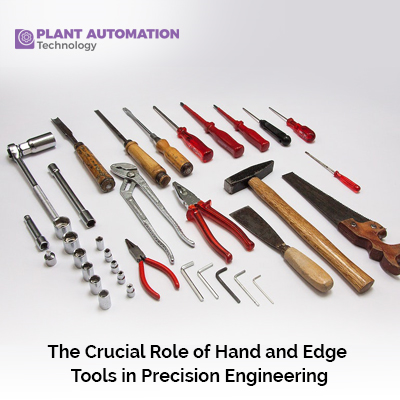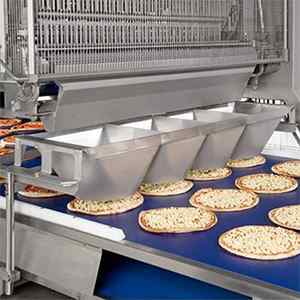The Crucial Role of Hand and Edge Tools in Precision Engineering

Introduction:
Precision engineering, an interdisciplinary field that integrates various engineering disciplines to design and produce high-precision components and systems, relies heavily on a combination of advanced machinery and skilled craftsmanship. Amidst the ever-evolving landscape of technological innovation, hand and edge tools continue to play a crucial role in precision engineering. While automated systems and computer numerical control (CNC) machines dominate the industry, the precision and finesse offered by hand and edge tools remain unparalleled. This article explores the indispensable role these traditional tools play in achieving precision in engineering processes.
The Evolution of Precision Engineering:
Precision engineering has come a long way from its origins, and its evolution is closely tied to the advancements in tools and machinery. Initially rooted in the watchmaking industry, precision engineering gradually expanded its reach to sectors like aerospace, medical, automotive, and electronics. As industries demanded components with increasingly tight tolerances, the need for precise tools became paramount. While computerized machines have become a staple in modern workshops, the foundational role of hand and edge tools cannot be overstated.
The Versatility of Hand Tools:
Hand tools have been an integral part of human craftsmanship for centuries. In precision engineering, these tools provide a level of control and detail that automated systems often struggle to match. Instruments like micrometers, calipers, and dial indicators are fundamental hand tools that enable engineers to measure and inspect components with remarkable accuracy. The tactile feedback and nuanced adjustments possible with these tools empower engineers to make real-time decisions based on their experience and intuition.
| Also Read: How Precision Saw Blades and Handsaws Drive Industrial Automation Efficiency? |
One of the key advantages of hand tools is their versatility. While automated machines excel at repetitive tasks, hand tools can adapt to various materials, geometries, and intricate designs. Craftsmen in precision engineering rely on a toolkit that includes screwdrivers, pliers, hammers, and files to refine and finish components with meticulous attention to detail. The hands-on approach offered by these tools allows engineers to address unique challenges that may arise during the manufacturing process.
Precision Machining with Edge Tools:
Edge tools, including cutting tools, drills, and reamers, form the backbone of precision machining processes. While CNC machines dominate the production floor, the cutting precision of these machines depends heavily on the quality and sharpness of the edge tools employed. The process of turning, milling, and grinding relies on the precise interaction between the cutting tool and the workpiece, demanding a high degree of accuracy.
The design and manufacturing of cutting tools themselves represent a specialized field within precision engineering. Engineers focus on materials, geometries, and coatings to enhance the durability and cutting efficiency of these tools. Carbide and high-speed steel are common materials due to their ability to withstand the high temperatures generated during machining processes. Coatings such as titanium nitride and diamond-like carbon further improve tool life and performance.
The Hand-Tool Interface in Precision Engineering:
While automated processes have significantly streamlined manufacturing, the integration of hand tools at crucial stages remains essential. Hand tools bridge the gap between the precision of automated machines and the fine adjustments required for a flawless end product. Whether it's deburring, polishing, or correcting minor imperfections, skilled engineers utilize hand tools to achieve the desired surface finish and dimensional accuracy.
Moreover, the collaboration between human intuition and hand tools is particularly evident in prototype development and small-scale production. In these scenarios, where rapid adjustments and quick problem-solving are paramount, hand tools empower engineers to refine designs on the fly. The ability to make precise adjustments based on tactile feedback and visual inspection is a unique advantage that hand tools bring to the table.
Craftsmanship and Quality Control:
Beyond their technical applications, hand and edge tools contribute to the craftsmanship and quality control aspects of precision engineering. Skilled artisans often apply finishing touches to components, ensuring that every detail aligns with the specified tolerances and design requirements. The human touch in these final stages adds a level of care and scrutiny that complements the precision achieved by automated systems.
Quality control processes heavily rely on hand tools for inspections and measurements. While automated inspection systems have their place, human inspectors armed with hand tools can identify subtle defects and deviations that might go unnoticed by machines. This combination of technology and craftsmanship enhances the overall quality assurance process in precision engineering.
Challenges and Innovations:
Despite the enduring importance of hand and edge tools, precision engineering faces challenges in keeping up with the demands for faster production and tighter tolerances. The industry continues to witness innovations that aim to enhance the capabilities of both traditional tools and automated systems. For instance, smart tools equipped with sensors and connectivity options are being developed to provide real-time data feedback and optimize machining processes.
In the realm of edge tools, advancements in materials and coatings are ongoing. Researchers are exploring nanomaterials and composite materials to create cutting tools with superior wear resistance and enhanced cutting performance. These innovations aim to address the need for increased efficiency while maintaining the precision demanded by the industry.
Conclusion:
In the ever-evolving landscape of precision engineering, hand and edge tools stand as timeless pillars supporting the quest for perfection. As technology continues to advance, the synergy between automated systems and traditional tools becomes increasingly vital. The tactile finesse, versatility, and craftsmanship offered by hand tools, combined with the precision of edge tools, create a dynamic ecosystem where human ingenuity and technological innovation coalesce. As precision engineering ventures into the future, the significance of these tools in shaping the landscape of high-precision manufacturing remains unwavering.







